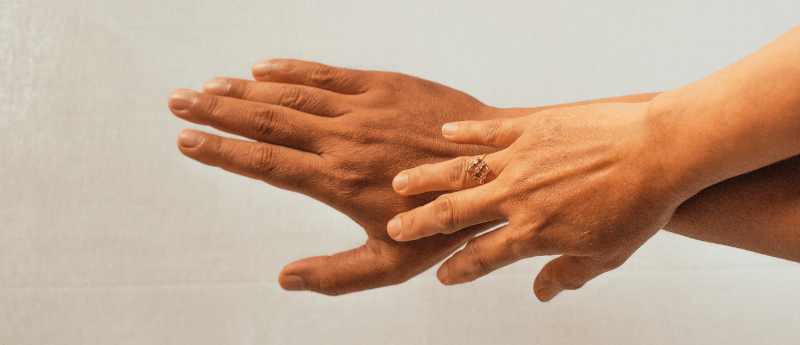Why do we feel things that aren’t really there?

Researchers at Ruhr University Bochum (Germany) have delved into the depths of human perception using virtual reality (VR). Through exploring the boundaries between physical and virtual touch, this research could advance our understanding of neurological diseases that affect self-perception.
Led by Artur Pilacinski and Christian Klaes from the Department of Neurotechnology, the researchers discovered that participants experienced tingling sensations where their virtual bodies were touched with a virtual object, despite no real physical contact. The team dubbed this fascinating discovery ‘phantom touch illusion.’
“People in virtual reality sometimes have the feeling that they are touching things, although they are actually only encountering virtual objects,” explained Pilacinski. “We show that the phantom touch illusion is described by most subjects as a tingling or prickling, electrifying sensation or as if the wind was passing through their hand.”
The experiment involved 36 volunteers who were given VR glasses and asked to touch virtual objects and their virtual bodies with a virtual stick. The majority of participants reported a “tingling” sensation.
Further exploring this discovery, the team set out to identify which neural pathways were involved in phantom sensations. Interestingly, the illusion persisted even when participants interacted with unseen (inferred) parts of their bodies, suggesting that phantom touch illusion extends beyond visual cues and is a complex interplay of sensory perceptions and internal body representations.
The team reasoned that phantom touch illusion is caused by the tactile gating process, which, at a neuronal level, is the downregulation of neural firing in response to tactile receptor activation. In other words, the nervous system counteracts the anticipated sensory input caused by your own movements. It’s the reason you cannot tickle yourself. The fact that participants experienced phantom touch illusion even when touching invisible body parts implies that tactile gating is not solely vison dependent.
In an additional control experiment, where a laser pointer replaced virtual objects, the phantom touch illusion vanished, reaffirming its unique relation to virtual touch.
Klaes envisions promising applications in VR and medicine: “It could even help to deepen the understanding of neurological diseases and disorders that affect the perception of one’s own body.”
The team now plan to collaborate with the University of Sussex (UK) to analyze the underlying neural processes of phantom touch illusion.
“It is important to first distinguish between the actual sensations of phantom touch and other cognitive processes that may be involved in reporting such embodied sensations, such as suggestion, or experimental situation demands,” explained Pilacinski. “We also want to further explore and understand the neural basis of the phantom touch illusion in collaboration with other partners.”





